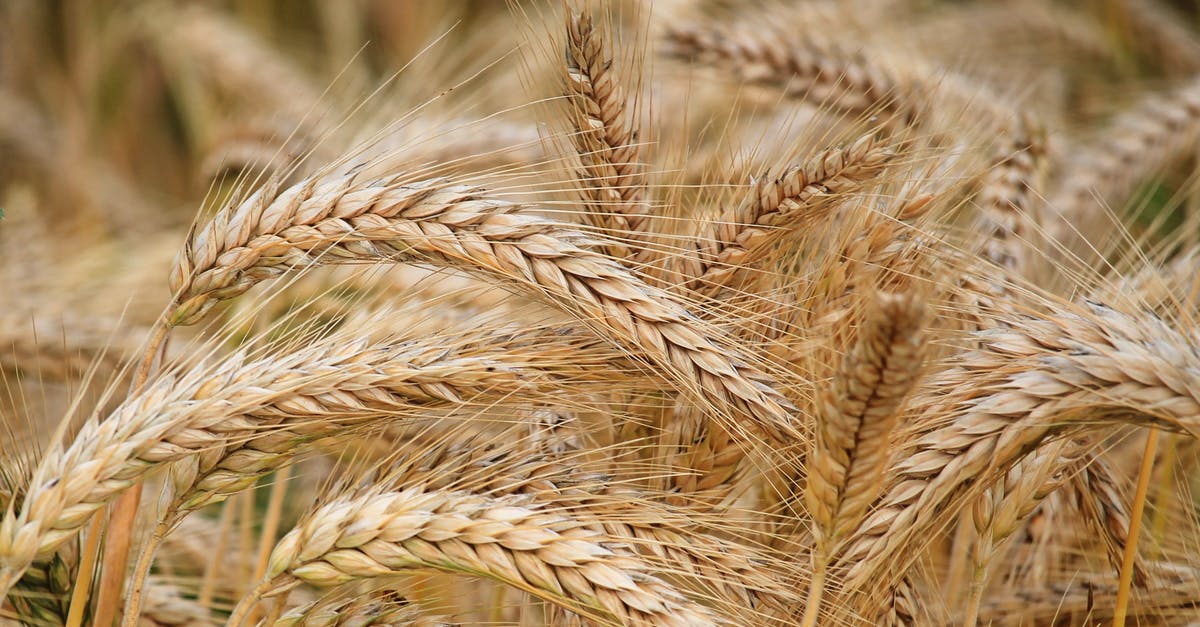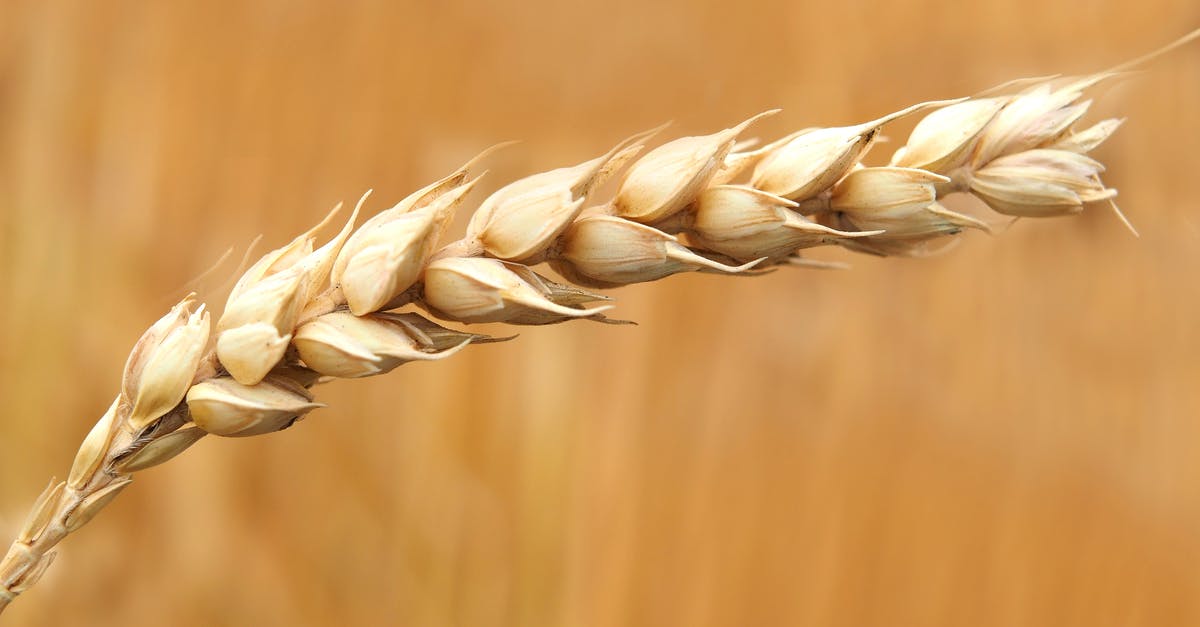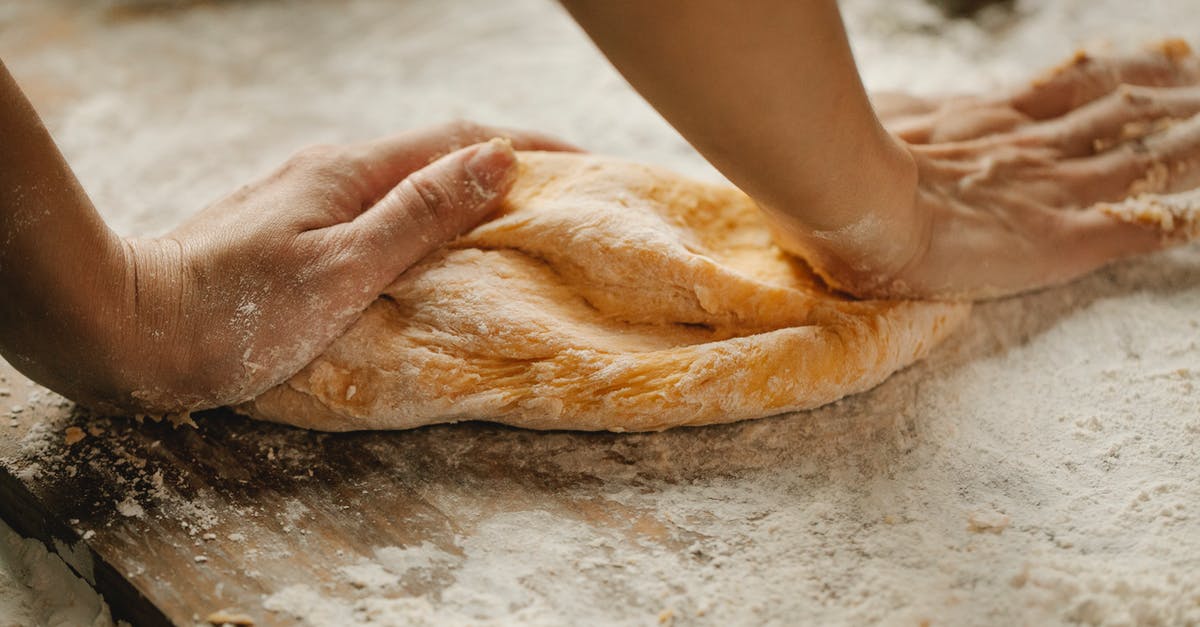What is the effect of adding alkaline or acidic substances to wheat flour?

What are the chemical reactions of adding alkaline substances to wheat flour dough and how does it change the properties and behavior? The same for acidic substances.
Best Answer
I can think of adding alkali or acid substances mainly as means of changing the ph of the dough. And adding can be understood as in the dough, or on its surface.
Alkali/basic additives or ingredients
Gluten only works if PH is between 3 and 11. Outside those values it loses its stength.
Before reaching PH>11 it will make flour have a higher absorption.
It's a way to relax the dough, as the technic used to stretch noodles as it has previously been cited in this question (see @TFD and @Chad's answers), and also in this question. To make that kind of noodles, you add the alkali to the flour, resulting it to be in the dough.
Another way basic substances are used in dough is giving them a bath in caustic soda, as Germans do with their Laugengebäck (the most known ones outside Germany probably are the Brezels/Pretzels). The lye makes them have their characteristic crust: brown, and hard and thin, like a good sausage.
Acidic additives or ingredients
Acids can also weaken the gluten, but in bread making is not so strange to add certain acids, or wanting an acidic dough.
One of the reasons on wanting an acidic final loaf is it will help increasing the shelf life, as it will act as a preservative.
Besides that, there is a very common acid used in doughs: Citric acid / Ascorbic acid / E-300. It helps the dough to rise more and faster, and be more manageable and have a crumb that resembles like cotton candy. You can read more on Ascorbic acid at the page of the Real Bread Campaign, and in this YouTube video you can see its effect in dough.
Another reason for wanting a low PH dough is to avoid starch degradation. Flours have enzymes (amylase) that end up degrading it. But that enzymatic activity is stopped with a PH<4.5. This is well known with 100% rye breads:
I know the question states wheat flour, but this example is clarifier. Rye flour has low gluten, and it has a somehow "low quality" (if compared with "normal" wheat flour). Some recipes call for strong high gluten wheat flour to retain gas bubbles from the leavening that won't get trapped by rye's gluten. But in 100% rye breads gas can also be trapped. That is why usually rye breads are made with sourdough, which has acetic and lactic acids. They give the dough the right PH, and the starches in rye will get gelatinized and catch the gasses in a similar (although less effective way) than gluten. Sometimes, instead of sourdough, yeasts and acid are added as ingredients.
That was an specific example with rye, but wheat flour also has starches, and they can also be gelatinized, giving a distinctive sourdough touch to to 100% wheat breads.
Acidic and basic at the same time
(Thanks @ChrisSteinbach for reminding me it)
When mixing an acid and a base, a chemical reaction happens, neutralizing both and releasing CO2 gas:
NaHCO3 + H+ ? Na+ + CO2 + H2O
That gas is employed to leaven the dough, as in a chemical leavener. I.E. in Irish bread or typical cakes.
Stuff that is not acidic nor basic... yet
- As a chemical leaveners improvement, one would like the reaction wouldn't start as soon as acid, base and water are mixed, but a bit later. This woud let some more time to work on the dough. Some salts have the characteristic of degrading at high temperatures into acid, helping (usually in the oven) for a second rise.
Pictures about "What is the effect of adding alkaline or acidic substances to wheat flour?"



Is wheat flour alkaline or acidic?
Wheat flour usually has a pH between 6.0 and 6.8, according to the authors of "Pearson's Chemical Analysis of Foods." That makes most flour slightly acidic, but close to neutral in terms of pH. White flour is often bleached using chlorine. Chlorine is very alkaline.What does acidity do to dough?
Acidic additives or ingredients Besides that, there is a very common acid used in doughs: Citric acid / Ascorbic acid / E-300. It helps the dough to rise more and faster, and be more manageable and have a crumb that resembles like cotton candy.How does acidity affect bread?
pH plays a significant role in the production of both yeast-raised and chemically leavened bakery products. In bread production, it exerts its principal effects during fermentation where it controls yeast activity, amyloltic action, gluten characteristics and the survival of rope-producing organisms.Which acid is present in wheat flour?
The amino acid concentrations (in grams per 100 g of protein) in flours of the different wheat varieties varied: aspartic, 3.28\u20136.76; serine, 4.17\u20135.18; glycine, 4.31\u20137.11; alanine, 5.62\u20138.70; arginine, 2.10\u20133.35; tyrosine, 3.03\u20134.10; cystine, 0.68\u20134.32; proline, 3.32\u201314.98; threonine, 0.94\u20131.96; histidine, 0.82\u20131.86; ...What is the difference between acidic and alkaline?
More answers regarding what is the effect of adding alkaline or acidic substances to wheat flour?
Answer 2
Alkaline solutions are added to wheat noodle dough when it is too be pulled by hand. The alkaline substance will break down the gluten connections to make a more pliable dough
See What flour and technique do I need for hand pulled noodles?
Answer 3
A mixture of sodium bicarbonate (which is alkaline) and tartaric acid is commonly used as a chemical leavener in baking. If flour is mixed with small amounts of these substances, then carbon dioxide gas will form when water is added to the mixture creating small bubbles in the batter or dough. The mixture is typically cooked as soon as possible after the leavening agent is introduced so that the gas bubbles do not have time to escape and become baked-in.
Answer 4
Another way basic substances are used in dough is giving them a bath in "caustic soda", as Germans do with their Laugengebäck (the most known ones outside Germany probably are the Brezels/Pretzels).
It should be "Baked Baking soda" instead of "Caustic soda" Caustic soda is poisonous.
Answer 5
Alkali for the various German lye treated breads/rolls is very much for the promotion of browning to achieve that rich brown crust. Caramelisation in particular is accelerated in alkali conditions. As far as I know, these recipes have lye solution brushed on to the surface before baking.
Yeast thrives in a slightly acidic environment.
Answer 6
Quite some cookie/shortbread recipes (including commercial ones - oreo is a likely candidate, it isn't airy at all but has an akali added) contain baking soda or other alkalines but not a trace of acid - likely because a) a bit of the baking soda taste is strangely expected, b) because it helps browning. Leavening is unlikely the intention, since leavening is sometimes the last thing you want in dense shortbreads, given even the leavening from moisture content evaporating can turn shortbread fingers into shortbread sausage fingers...
Sources: Stack Exchange - This article follows the attribution requirements of Stack Exchange and is licensed under CC BY-SA 3.0.
Images: Pixabay, Vaibhav Jadhav, Pixabay, Klaus Nielsen
